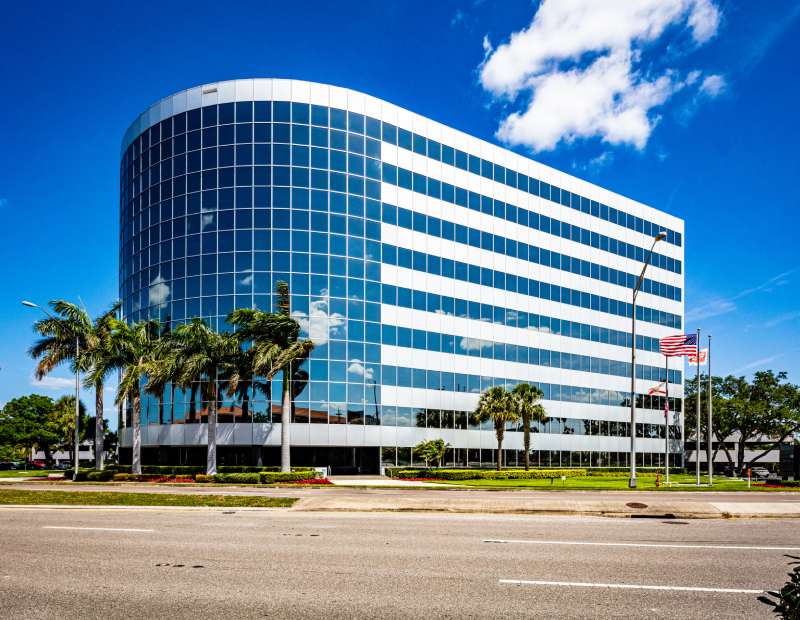South Florida’s Office Market: A Landscape of Opportunities and Emerging Trends
South Florida’s office market is currently experiencing a fascinating transformation, characterized by significant shifts toward suburban assets and smaller office spaces, even as high-profile trophy sales dominate urban headlines. Let’s delve into the key trends, opportunities, and challenges shaping this dynamic region’s commercial real estate landscape.
Current Market Overview
As of mid-2025, commercial real estate transactions in South Florida have exceeded $5.6 billion, with office space sales hitting an all-time high of $1.4 billion, more than double the sales from the previous year, according to Miami Realtors. Broward County stands out with its vigorous growth, particularly in Fort Lauderdale, leading both in volume and transaction speed compared to its neighboring counties.
Why the Shift Towards Suburban Assets?
-
Rising Costs: Central business districts are witnessing increasing rental rates influenced by ongoing developments in places like West Palm Beach. This trend is pricing many companies out, driving them toward suburban areas.
- Tenant Preferences: Businesses are prioritizing elements such as commute convenience and proximity to lifestyle amenities, which suburban areas can provide. This shift has spurred demand for smaller, amenitized office spaces.
Insights from the Experts: Opportunities in the Market
Matt Brown, COO of NAI Merin Hunter Codman Inc., highlights several underappreciated trends in the South Florida office investment landscape. “Small businesses constitute the largest segment of private-sector employers in the U.S.,” Brown states, emphasizing the demand for flexible and modern office environments suited for smaller firms.
Key Trends in Office Investments
-
Increased Demand for Smaller Spaces:
[link-whisper-related-posts]- Smaller office sizes, ranging from 1,500 to 3,500 square feet, are significantly in demand.
- Midsize and boutique professional firms are seeking move-in-ready spaces.
-
Value of Suburban Properties:
- Properties in suburban areas often come at a lower cost compared to premium trophy buildings.
- Investors might underestimate these locations’ long-term potential, particularly as companies search for affordability.
- Quality of Life and Tax Advantages:
- The region’s combination of job growth, favorable tax conditions, and high-quality living conditions continues to attract businesses and capital.
The Repositioning Strategy: First 90 Days of Ownership
NAI Merin Hunter Codman Inc. employs a strategic approach during the initial days of asset acquisition. The process involves:
- Thorough Lease and Maintenance Reviews: Assessing tenant rollover risks and addressing any deferred maintenance.
- Engagement with Tenants: Conducting interviews to gather feedback and identify improvement areas, which aids in tenant retention and satisfaction.
Value-Add Investment Metrics
Investing in office properties means looking for light value-add opportunities. Brown asserts that they focus on properties below replacement costs that are financially viable, providing clear growth potential through:
- Leasing Strategies: Accelerating lease-up through tailored agreements for larger tenants.
- Renovation: Upgrading amenities like lobbies and workspaces to enhance tenant experience and drive occupancy.
The Future of Office Properties in South Florida
High Demand Assets
Moving forward, certain types of office assets are expected to remain in high demand:
- Trophy and Class A Buildings: Continue to attract large corporations due to their amenities and central locations.
- Class B+ Properties: Particularly appealing in suburban settings, offering a balance between cost and quality.
Emerging Market Trends
Additional tenant priorities are shifting toward:
- Enhanced Energy Efficiency: Buildings that emphasize sustainability are becoming more attractive.
- Disaster Resilience: Facilities with features such as backup power solutions are valued highly in today’s market.
Exploring New Investment Opportunities
In addition to South Florida, NAI Merin Hunter Codman Inc. is exploring potential markets across the Southeast U.S., identifying parallels in cities like Charlotte, Raleigh-Durham, Charleston, and Nashville. These locations are experiencing similar growth dynamics driven by:
- Population Growth: Increasing demand for commercial space.
- Pro-Business Policies: Creating an attractive environment for new investments.
Conclusion: A Bright Future Ahead
South Florida continues to evolve as a powerhouse in the commercial real estate market. With rising demand for suburban spaces and a shift towards accommodating smaller, amenitized offices, the potential for growth remains robust. Investors who pivot toward these emerging trends and prioritize tenant needs will likely find substantial opportunities in this dynamic landscape.
For more insights on commercial real estate trends, visit Commercial Search.
This article highlights the evolving landscape of South Florida’s office market, emphasizing the demand for flexible office spaces and the significance of suburban properties as viable investment options. By concentrating on tenant needs and operational excellence, the potential for future growth remains substantial.


